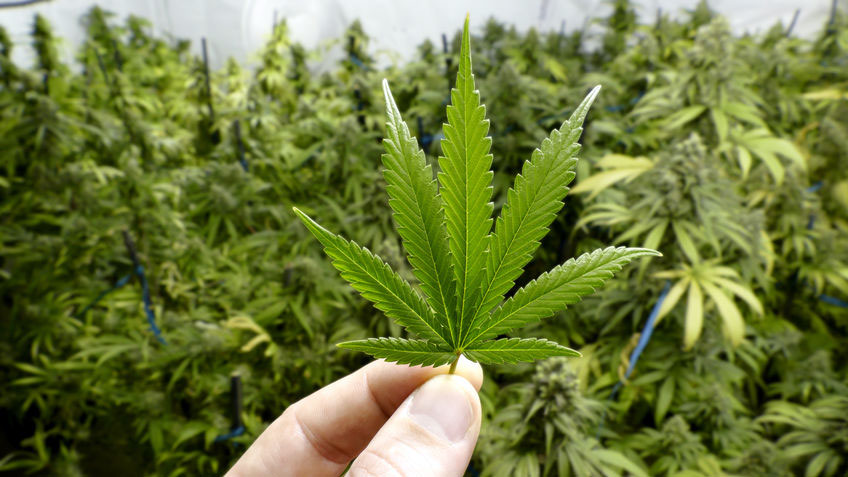
A New Study Describes How Cannabis Gives You the "Munchies"
Cannabis and the infamous "munchies" have been intertwined for as long as anyone can remember. It's a common stereotype that consuming cannabis can lead to insatiable cravings for all things savory, sweet, and everything in between. But what's the science behind this phenomenon? A new study sheds light on how cannabis influences our appetite and why it often triggers the munchies. In this article, we'll delve into the details of this fascinating research, exploring the mechanisms behind the munchies and what it means for cannabis enthusiasts.
The Age-Old Munchies Mystery
For generations, the munchies have been a well-known side effect of cannabis consumption. Countless stoner comedies and movies have depicted characters raiding the refrigerator or indulging in late-night junk food runs after getting high. But until recently, the exact reasons behind this phenomenon remained somewhat of a mystery.
The Study That Unraveled the Mystery
A study published in the journal "Nature Neuroscience" in 2015 provided groundbreaking insights into how cannabis stimulates appetite. The study, conducted by researchers from Yale University, focused on the brain's endocannabinoid system and how it interacts with cannabinoids like THC (tetrahydrocannabinol), the primary psychoactive compound in cannabis.
Understanding the Endocannabinoid System
To grasp the study's findings, it's essential to understand the endocannabinoid system (ECS). The ECS is a complex cell-signaling system present in all mammals, including humans. It plays a crucial role in regulating various physiological processes, including appetite, mood, pain perception, and more.
The ECS consists of three main components:
Endocannabinoids: These are natural cannabinoids produced by the body. Anandamide and 2-arachidonoylglycerol (2-AG) are two primary endocannabinoids.
Receptors: There are two primary types of receptors within the ECS: CB1 receptors, mainly found in the brain and central nervous system, and CB2 receptors, primarily located in immune system cells.
Enzymes: Enzymes are responsible for breaking down endocannabinoids once they've fulfilled their roles.
The Role of THC in the Endocannabinoid System
When someone consumes cannabis, compounds like THC interact with the ECS, mimicking the effects of endocannabinoids produced by the body. THC primarily binds to CB1 receptors in the brain, leading to various effects, including alterations in mood, perception, and, relevant to this discussion, appetite.
How Cannabis Induces the Munchies
The Yale University study found that THC, when binding to CB1 receptors in a specific region of the brain called the hypothalamus, stimulates the release of a hunger-inducing hormone called ghrelin. Ghrelin is often referred to as the "hunger hormone" because it signals the body to eat.
Additionally, the researchers discovered that THC enhances the sensitivity of the sense of smell and taste, making food appear and taste more appealing. This heightened sensory perception can contribute to the intense food cravings experienced during the munchies.
Furthermore, THC influences the brain's reward system by increasing the release of dopamine, a neurotransmitter associated with pleasure and reinforcement. This dopamine surge can intensify the satisfaction derived from eating, making food even more irresistible.
The Evolutionary Perspective
From an evolutionary standpoint, the munchies might not seem like such a bad thing. Cannabis and its ability to induce hunger may have played a role in our ancestors' survival. Imagine a scenario where early humans stumbled upon a cannabis plant while foraging for food. Consuming cannabis and experiencing increased hunger might have encouraged them to eat more, ensuring they obtained sufficient calories for energy and sustenance.
The Implications of the Study
The Yale University study provides valuable insights into the munchies, but it also has broader implications. Understanding how cannabinoids like THC affect appetite can have significant medical applications.
For example, medical cannabis is increasingly prescribed to cancer patients undergoing chemotherapy, as it can help stimulate their appetite and combat the weight loss and muscle wasting often associated with the treatment.
Furthermore, the research could pave the way for the development of medications that target the endocannabinoid system to manage conditions such as obesity and eating disorders.
The "Caveats" of the Munchies
While the munchies are a well-known and often enjoyable aspect of cannabis consumption for many, it's essential to approach them with moderation and mindfulness. Overindulging in high-calorie, sugary, or fatty foods can lead to health issues such as weight gain, diabetes, and heart disease.
For those using cannabis medicinally or recreationally, it's crucial to be aware of the potential for overeating during a munchies episode and make conscious choices about the types of foods consumed.
Final Thoughts:
The study conducted by Yale University provided crucial insights into how cannabis induces the munchies. The interaction between THC and the endocannabinoid system, particularly the stimulation of ghrelin production in the hypothalamus, offers a scientific explanation for the intense food cravings experienced by cannabis users.
Understanding the munchies not only satisfies our curiosity but also has potential medical applications and may contribute to the development of therapies for various conditions related to appetite and eating disorders.
As cannabis continues to gain acceptance and undergoes further research, we can anticipate more discoveries that shed light on its effects, both beneficial and otherwise, offering a deeper understanding of its complex interactions with the human body.
Reference:
- Clark, T., Jones, J., Hall, A., Tabner, S., & Kmiec, R. (2018). Theoretical explanation for reduced body mass index and obesity rates in cannabis users. Cannabis and Cannabinoid Research, 3(1), 259-271. https://doi.org/10.1089/can.2018.0045
- Crocq, M. (2020). History of cannabis and the endocannabinoid system. Dialogues in Clinical Neuroscience, 22(3), 223-228. https://doi.org/10.31887/dcns.2020.22.3/mcrocq
- Keimpema, E., Mackie, K., & Harkany, T. (2011). Molecular model of cannabis sensitivity in developing neuronal circuits. Trends in Pharmacological Sciences, 32(9), 551-561. https://doi.org/10.1016/j.tips.2011.05.004
- Kleckner, A., Kleckner, I., Kamen, C., Tejani, M., Janelsins, M., Morrow, G., … & Peppone, L. (2019). Opportunities for cannabis in supportive care in cancer. Therapeutic Advances in Medical Oncology, 11, 175883591986636. https://doi.org/10.1177/1758835919866362
- Spanagel, R. (2020). Cannabinoids and the endocannabinoid system in reward processing and addiction: from mechanisms to interventions. Dialogues in Clinical Neuroscience, 22(3), 241-250. https://doi.org/10.31887/dcns.2020.22.3/rspanagel



